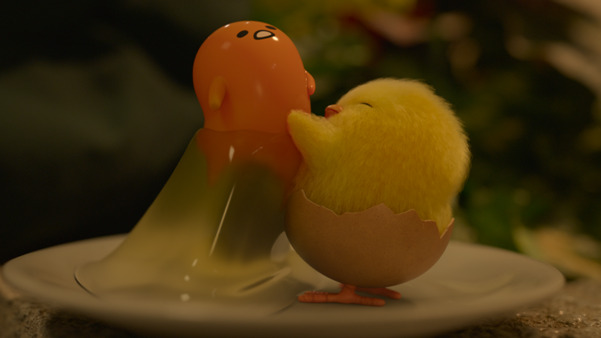Happy Friday! This week’s “global TV to watch” features my two of my favorite animated series from Japan. Both are currently available for streaming internationally.

I’ve been watching animated shows since I was a kid — from “Looney Tunes” and The Flintstones, to Pinky and the Brain and Shaun the Sheep — and titles in this genre will always have a place in my viewing. They’re great when I need a change from the mystery-crime dramas and dark supernatural shows I gravitate toward, but they’re terrific in their own right, too. Here are two of my favorites from Japan from the past year or so.
Gudetama: An Eggcellent Adventure
I love this show so much, I bought a Gudetama travel pillow and throw blanket, and have added more Gudetama-branded items to my to-buy list. The character Gudetama, a lazy, apathetic, and perpetually-tired anthropomorphic unfertilized egg (with pronounced egg yolk buttocks), has been hugely popular in Japan for the better part of the past decade. I didn’t know Gudetama existed until this show appeared in Netflix’s list of recommended titles for me.
Part live action, part CGI animation, Gudetama: An Eggcellent Adventure is a kid- and adult-friendly series that follows Gudetama and Shakipiyo, an enthusiastic newly-hatched chick with a can-do attitude, still attached to the bottom half its shell. Believing the two are siblings because they came from the same carton, Shakipiyo wants to find their mother and convinces Gudetama to come along. So begins their journey!
Over the course of the show’s ten 10-to-16-minute episodes, Gudetama and Shakipiyo find themselves in many a predicament — from Gudetama’s being a dish on a sushi restaurant’s conveyor belt, to the first sign of rotting, to Shakipiyo’s getting involved with the egg mafia. Then, finally, they make it to Wilson Farms and start looking for their mother, Julia… and find more chickens than they counted on…
Seriously, it’s hilarious. (With touching moments sprinkled here and there.)
Gudetama: An Eggcellent Adventure is currently available for streaming globally on Netflix.
Kotaro Lives Alone
Unlike the rated TV-G Gudetama, Kotaro Lives Alone is a TV-14 drama, although it does have humorous moments. Based on Mami Tsumura’s best-selling manga series, regarded as “the most heartwarming manga in Japan,” this series centers on Kotaro Sato, a four-year-old boy who, due to unfortunate (some might say horrible) circumstances, lives on his own in number 203 of the Shimizu Apartments. Given the way Kotaro thinks and often behaves — introducing himself to his neighbors in the traditional way with a small gift, offering words of wisdom to them, taking the responsibility to enroll himself in kindergarten, making a curry dinner from scratch, and the like — I think it’s safe to say that he’s an old soul. But Kotaro’s just a kid, too, one who loves watching his favorite cartoon and wears a plastic toy sword strapped to his side like the cartoon’s samurai hero.
Kotaro knows more than people often give him credit for, but he also doesn’t know the real reason behind the money that he uses to pay for the apartment, groceries, etc. Ayano Kobayashi, the young lawyer who gives Kotaro the money each week, does. Of his neighbors, he first grows close with Shin Karino, an uninspired manga artist who begins to look out for Kotaro and often accompanies him to the local bathhouse. Mizuki Akitomo, a club hostess in an unhealthy relationship with her boyfriend, also grows fond of the boy and vice versa. Then there’s Isamu Tamaru, a yakuza (probably) who is paternal (in a weird way) toward Kotaro (although I initially thought Tamaru was a perv). Kotaro’s few other friends are from kindergarten and the foster home where he used to live.
Kotaro Lives Alone tells a sad story about a little boy, with themes of abuse, abandonment, and false assumptions running throughout the ten half-hour episodes. But it’s also a heartwarming story — one of connection and support, independence and empowerment, trust and compassion — in which Kotaro couldn’t choose his blood family, but created a caring family with Karino, Akitomo, and Tamaru. There’s a scene in a later episode where Karino is with Kotaro at the graves of the boy’s grandparents, and Karino’s actions, or rather non-action, almost broke me.
I mentioned earlier about humorous moments. The scenes I readily recall that made me laugh out loud are the ones of Kotaro reading the newspaper. On the toilet. With his little slippers on the floor.
Yes, it’s melancholic, but overall it’s a sweet, lovely series.
Kotaro Lives Alone is currently available for streaming globally on Netflix.
__________________
As an affiliate of Amazon and other cos, affiliate links on this blog allow us to earn income from qualifying actions (at no extra cost to you).

